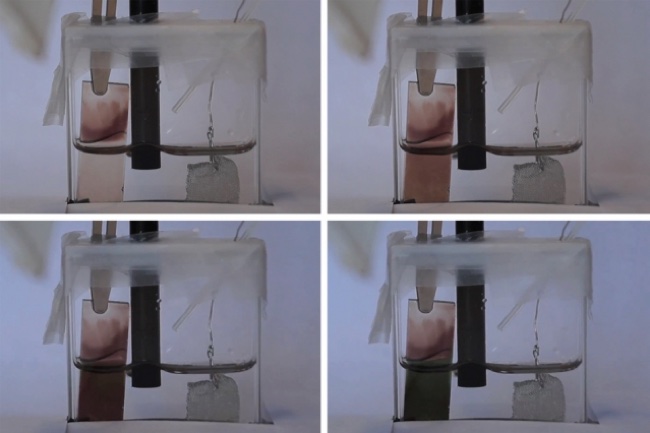
The researchers have created a form of glass infused with an electrochromic material that changes color when exposed to electricity. The glass can change from transparent to almost black instantly when an electrical current is passed through it.
The material responsible for the color change is a sponge-like metal-organic framework (MOF) that is capable or conducting both electrons and ions at high speeds. When electricity is applied to the window, the window’s changes causing the MOF to react and change color. Once in its black state, the electricity can be turned off, and the window can remain darkened without any further input or manipulation.
This isn’t the first time scientists have created self-shading windows, but it may be the instance that is the most efficient. The MIT system changes color instantly and only needs electricity when making the color switch. “It’s this combination of these two, of a relatively fast switching time and a nearly black color, that has really got people excited,” said MIT professor of chemistry Mircea Dincă.
Dincă believes the technology has the potential to transform household cooling by reducing the need for an air conditioner. “You could just flip a switch when the sun shines through the window, and turn it dark,” said Dincă, adding this technique could produce “pretty significant energy savings” for homeowners.
Currently, the technology has been demonstrated only in the laboratory, and reported in the online journal Chem. The next step for researchers is to build a 1-inch square sample that will showcase the technology and allow the team to demonstrate it for potential investors.



